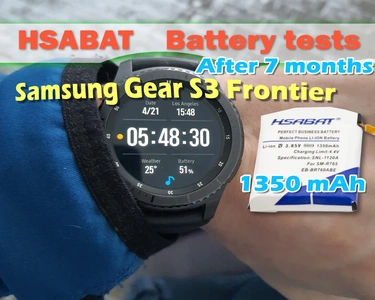
Introduction
Hi guys, you are on vrm24.com and we continue our epic story about using the battery for Samsung Gear S3 by Chinese manufacturer HSABAT. Today I'd like to show you the results of a number of tests we made at the beginning and after seven months of using the battery. The tests are simple, we can say casual, and show how well the battery holds its charge in typical usage - before and after.
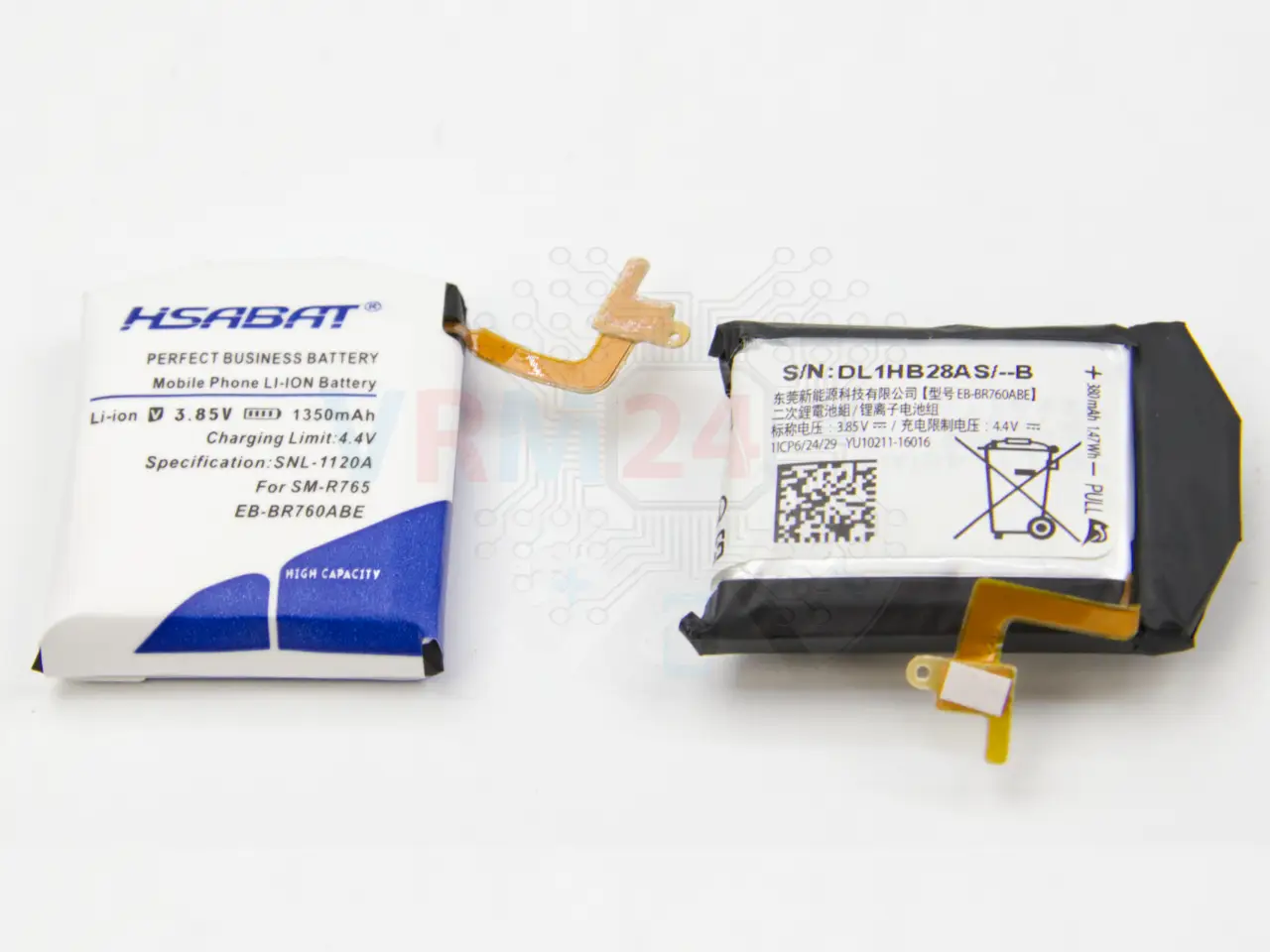
When we replaced the battery, I already mentioned that the declared capacity is three times larger than the capacity of the original battery. And after doing some preliminary tests, the battery actually performed really well, not three times better, but still. And it was important for us to test the battery after seven months and especially - a lot of people have asked us to test it and make a video about it.
This article will have an introduction with a little bit of background and the conditions under which we tested the battery, tests with some features on and off, and tests with running/jogging.
The first and important point I want to make is that as a Gear S3 user I use them extensively, I run with them regularly in different temperatures, and I charge them from a USB 3.0 port connected to a desktop, started at 5-15% capacity up to 100%, never leaving it charging overnight.
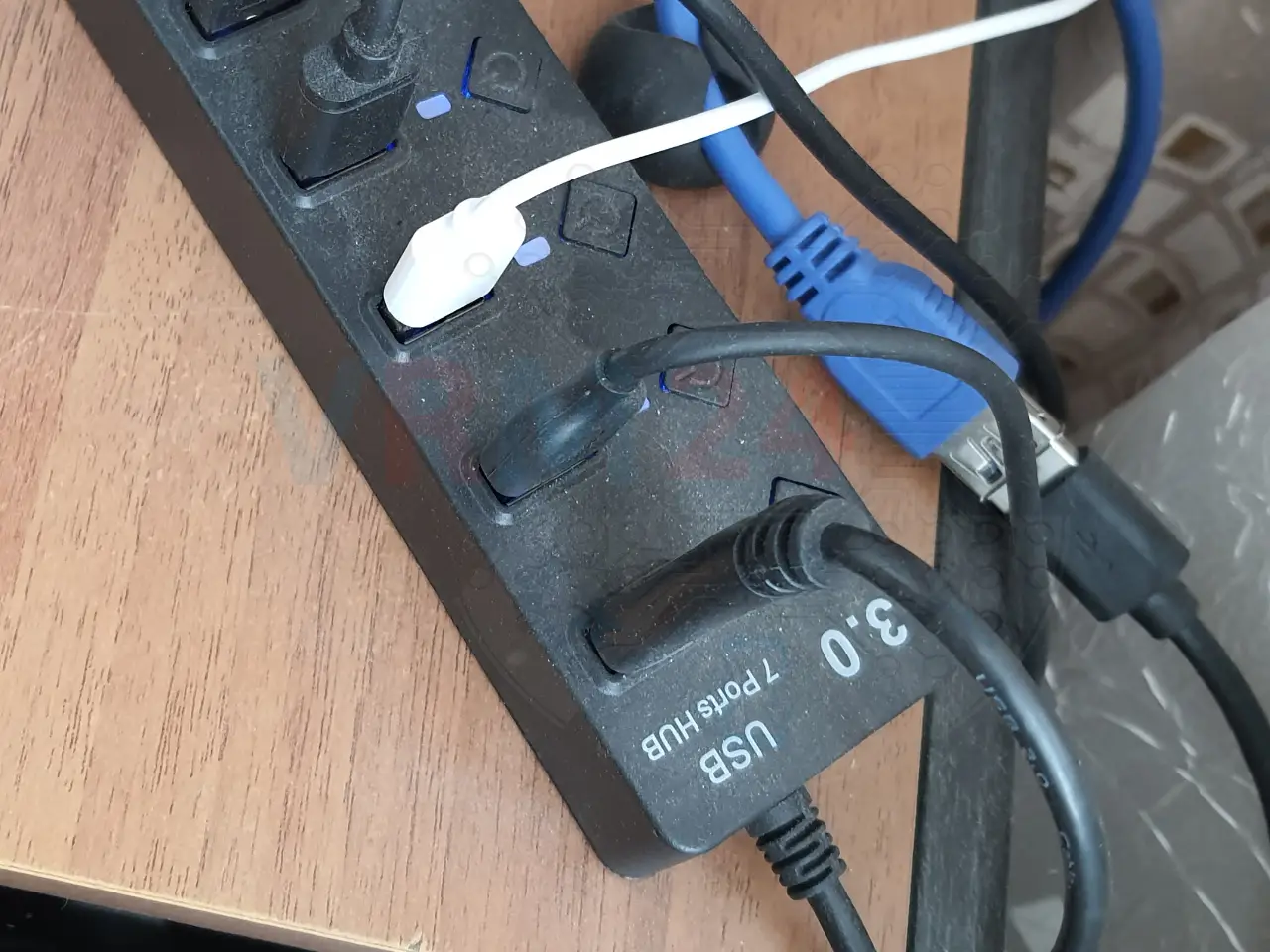
I also had to use other earbuds for tests after seven months, this may have had some effect on the results, hopefully negligible.
And just for an example of battery life - my colleague, who bought the same watch model at the same time as me, is still using the original battery, which is almost three years. So, this is also something to know, understand and take into account.
Next, the battery is charged up to 100% and discharged to 5% in the tests, power saving modes were not enabled, if the conditions are personalized, the percentages will be listed in the test results additionally.
So, conditions.
Basic conditions are the conditions under which I regularly use the watch, as you can see in the picture - most features are turned off or limited.
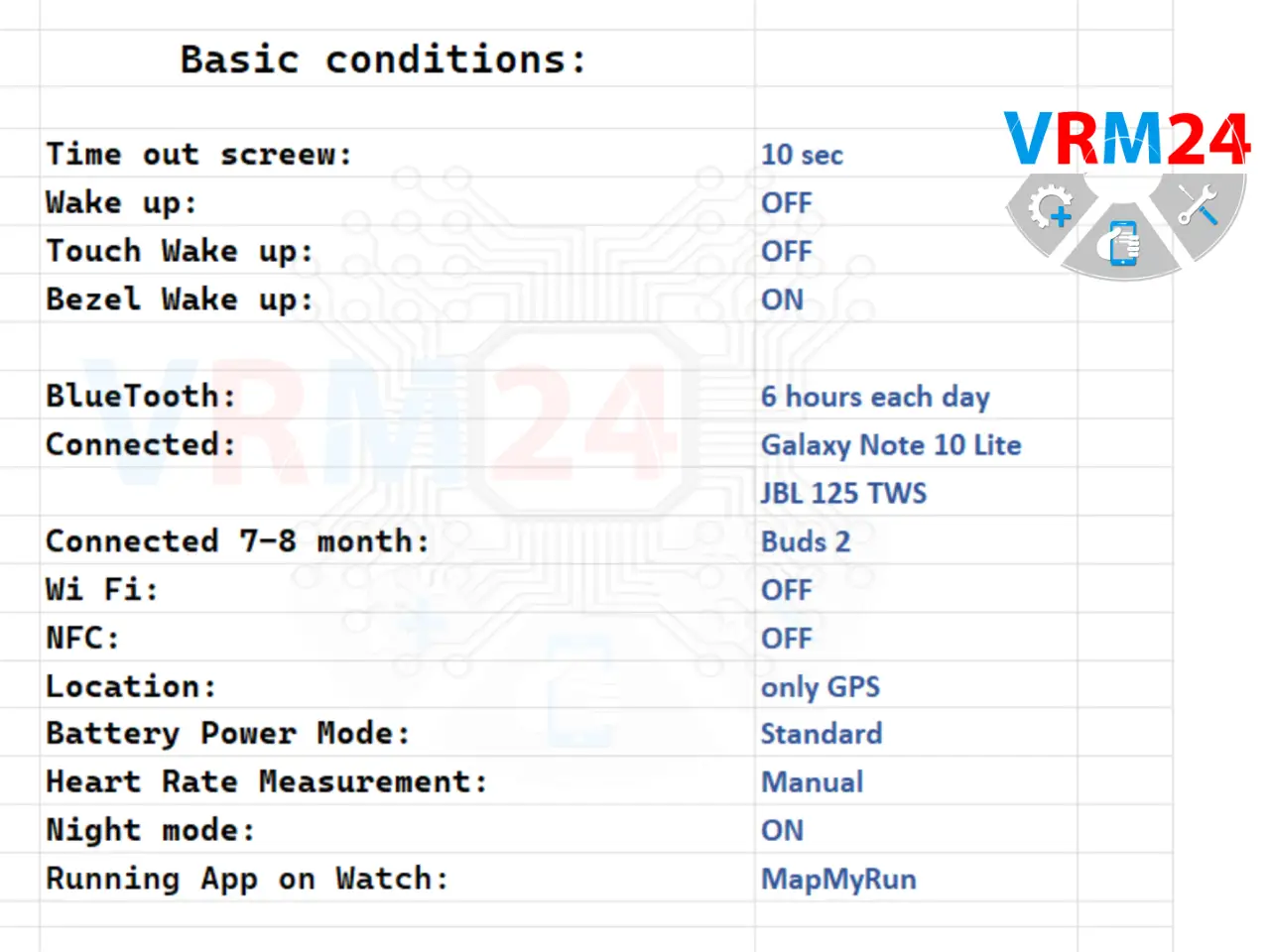
Conditions - For running would be - basic conditions plus the MapMyRun app installed directly into the watch with GPS and Bluetooth enabled and wireless earbuds connected.
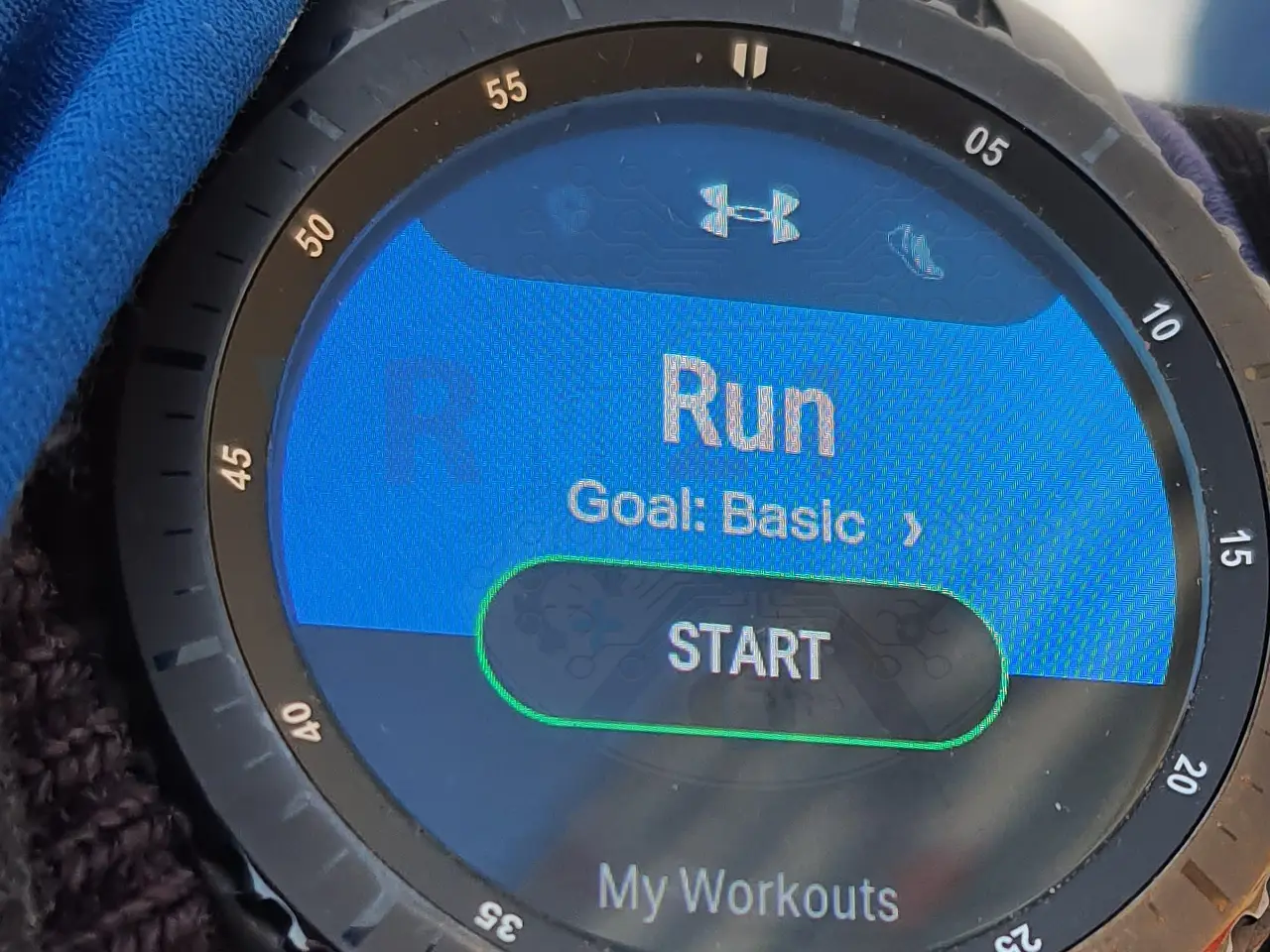
Condition - All Turned On - as you can see everything is turned on except NFC, this is a feature I have not tested at all and so decided not to include in the conditions.
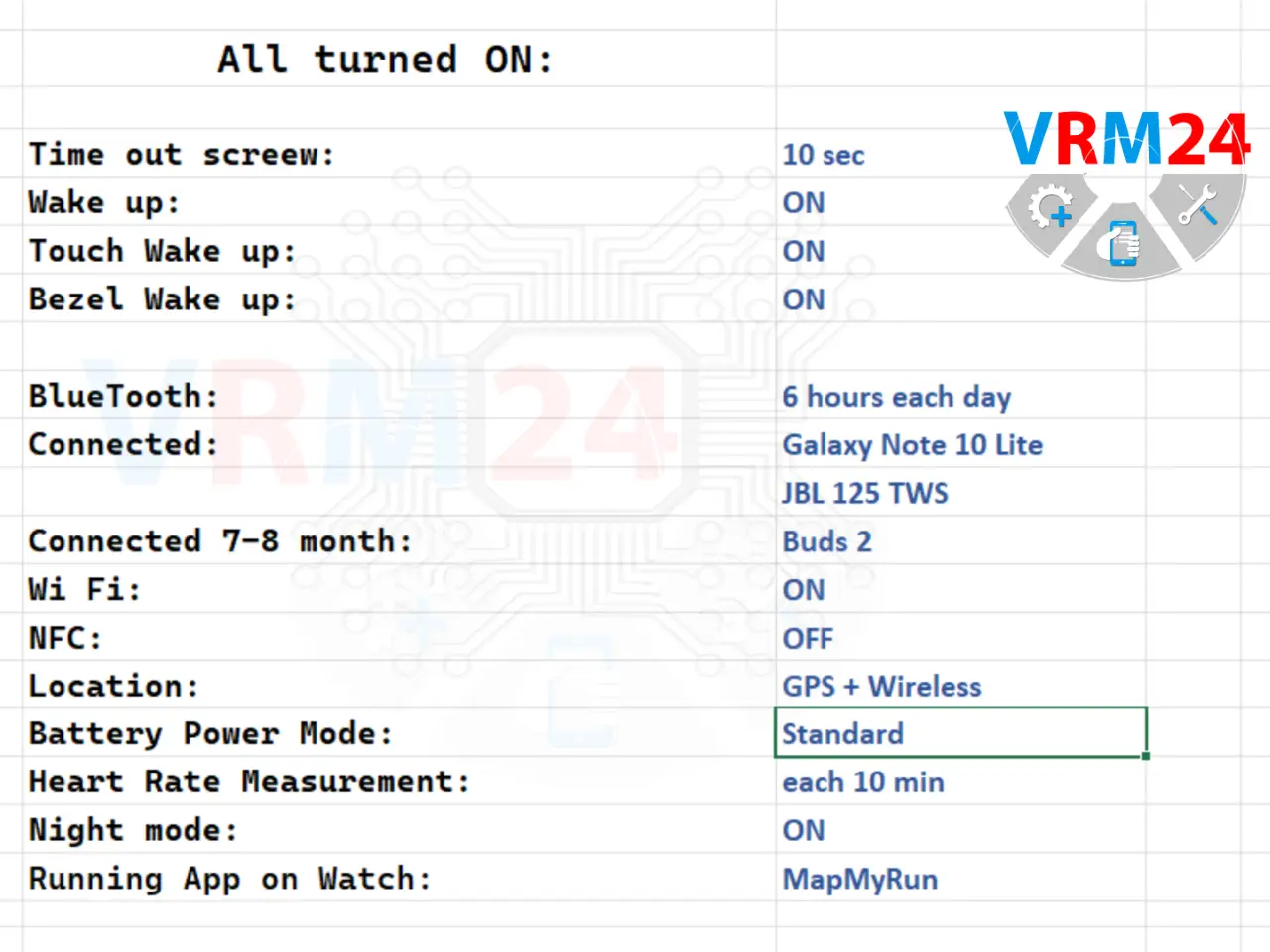
And the last condition for comparisons is Samsung Standard. What is it? As I understand it is a built-in feature that determines the remaining battery capacity based on preset algorithms. When fully charged, the battery settings indicate how long the battery will last in a particular mode. Since we have the standard mode selected, the data is taken from this mode.
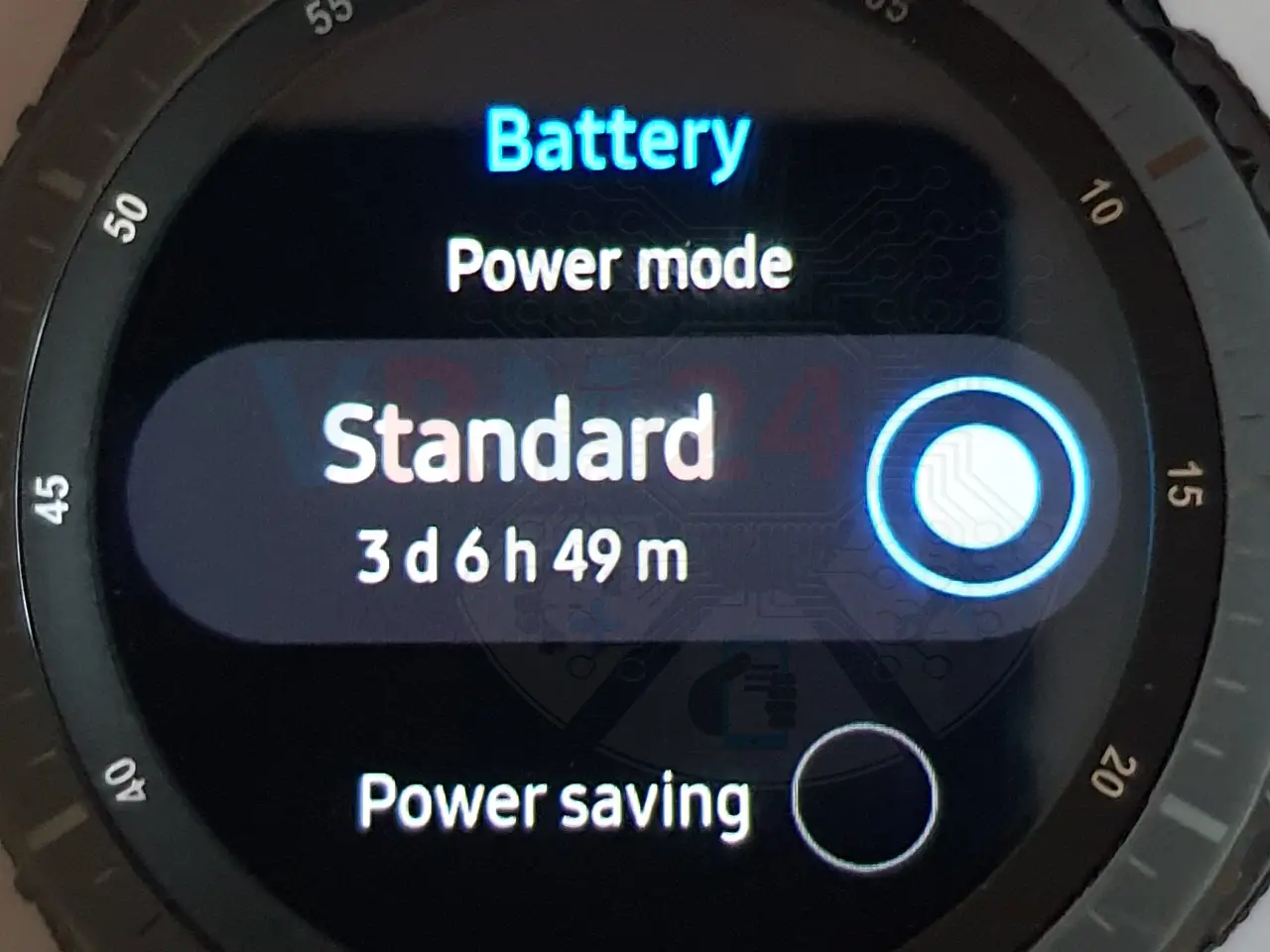
And yes, why in the tests it is written after 7-8 months, and not after seven or after eight months, why such wording. The point is that the tests were conducted at different times and at the turn of two months, actually, that's why this kind of phrase.
Let's finish with the conditions and move on to the results of the tests.
The tests
The graphs show the results of the tests with the Basic and All Turned On conditions at the bottom. In green we have the results after one month of use, turquoise after seven to eight months and red is the pre-installed function of the watch.
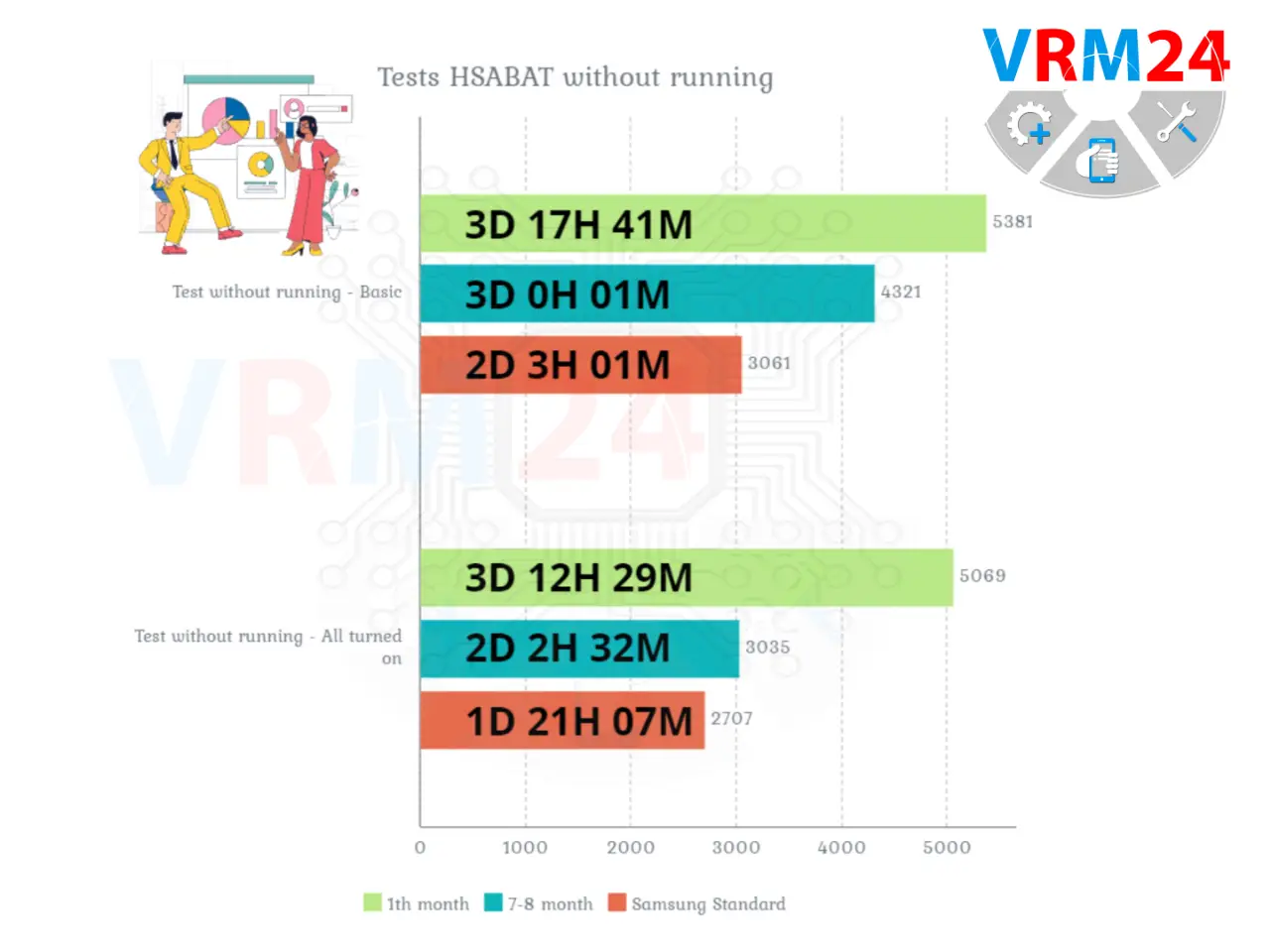
We can certainly see a marked tendency of battery degradation on the one hand and a significant difference with the data of Samsung Standard. In its first months, the battery was able to run for almost four days. And this is a really curious result, again, on the one hand the manufacturer declares increased capacity, on the other hand he is criticized for data falsification, but in the end, we see quite a good result.
However, if we approximately count the number of cycles after seven to eight months, which should be in the range of 60-80, and the degradation of the battery is approximately 20%, will this battery be enough for the life cycle of the original battery of 800 cycles? That is the real big question!
Moving on to the charging tests. The watch is connected to a desktop via a USB 3.0 hub at 5% start, the intervals in the readings are set to the first and second hour. As we can see all the values are approximately the same, but there are slight deviations in the second hour.
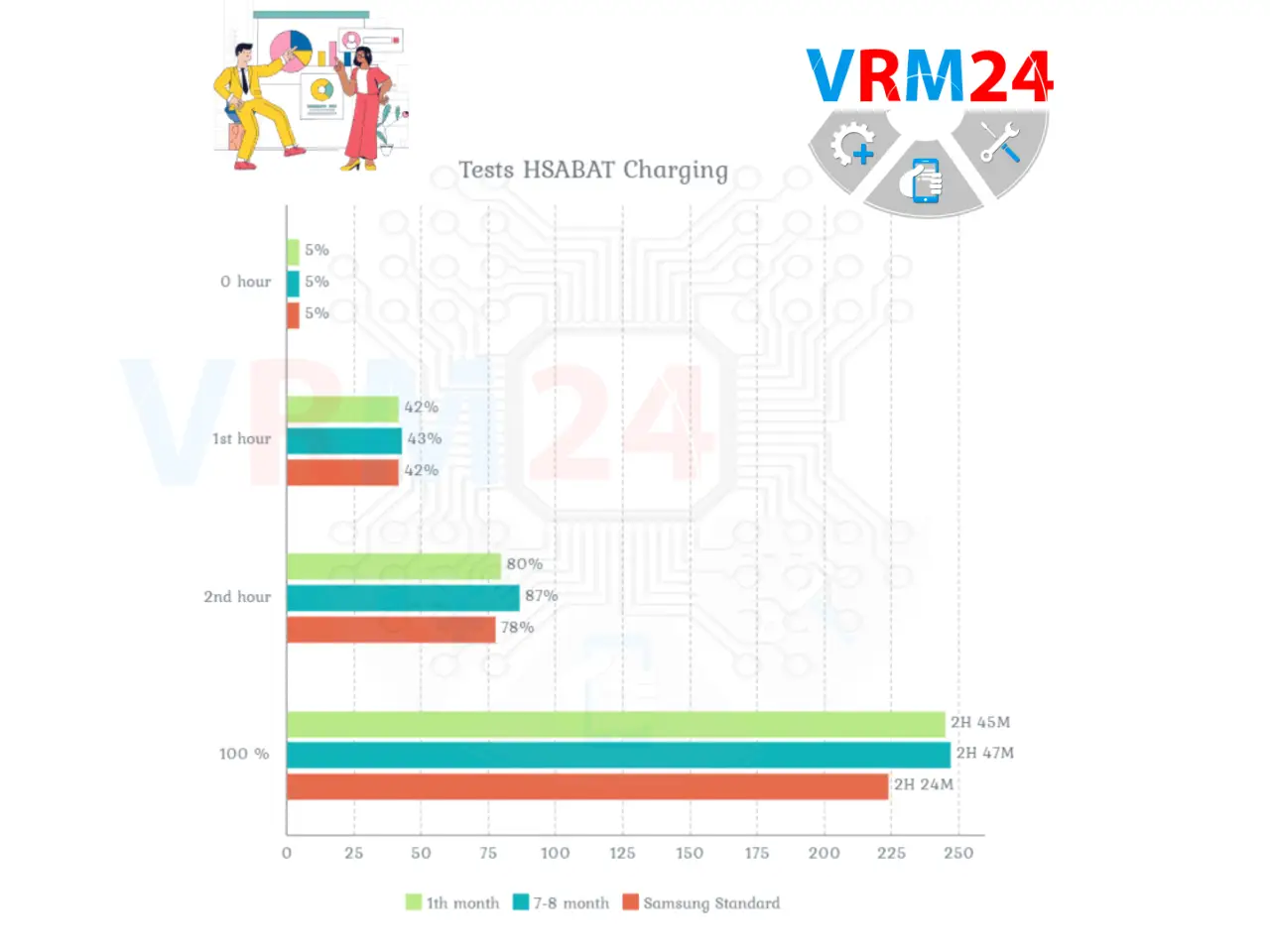
In night mode, actually there are not a lot of differences, also discharges by 10% for about eight hours, seven months on it did not affect it in any way. How many percent will discharge the original battery - unfortunately, we do not have such data.
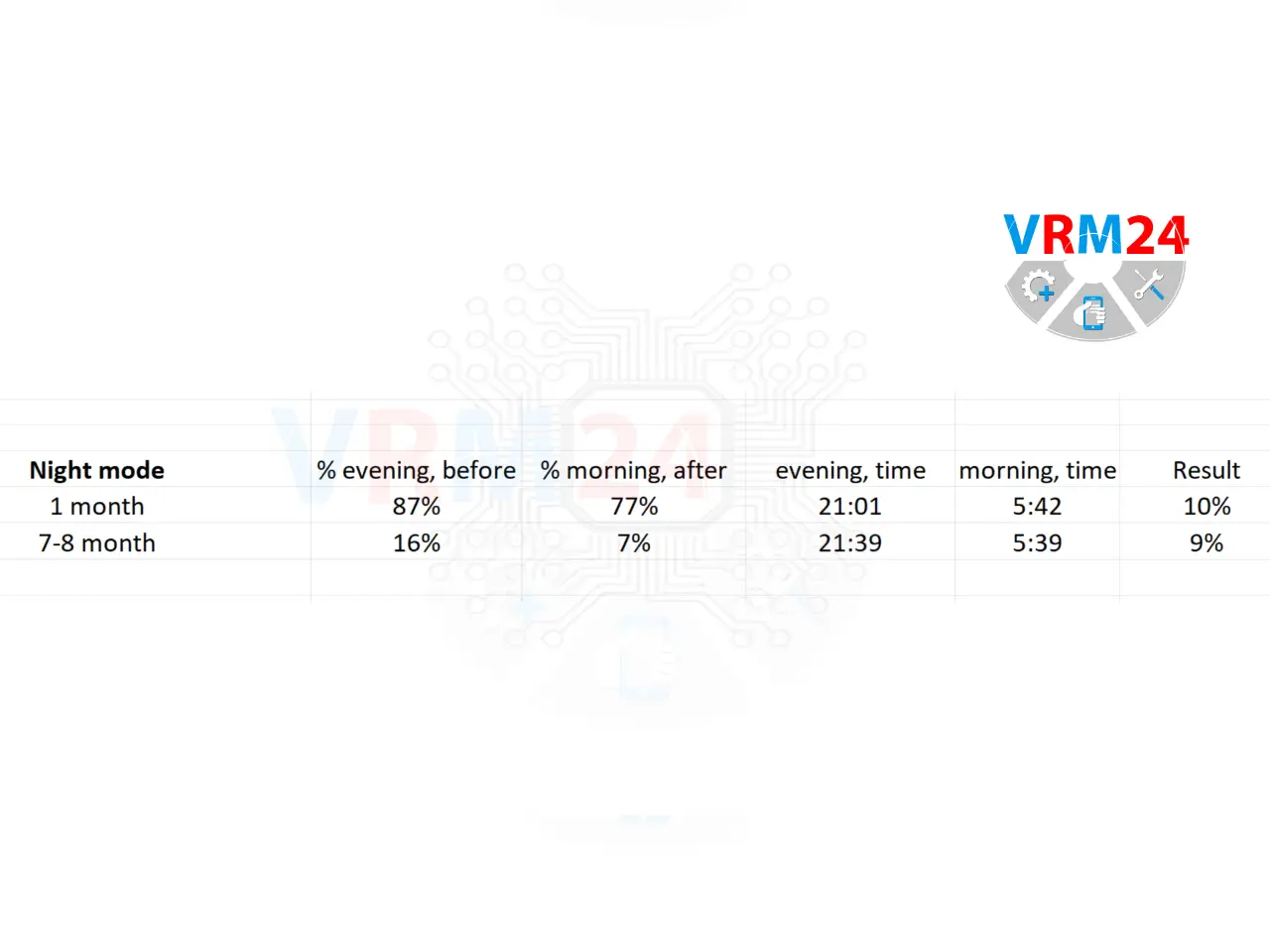
And finally, tests with running/jogging.
So, our first running test is using the watch with Basic conditions plus running once for two hours. As we can see, the battery lasted less than in the tests in the first month, but this result is still better than the result of the Samsung Standard offered to us.
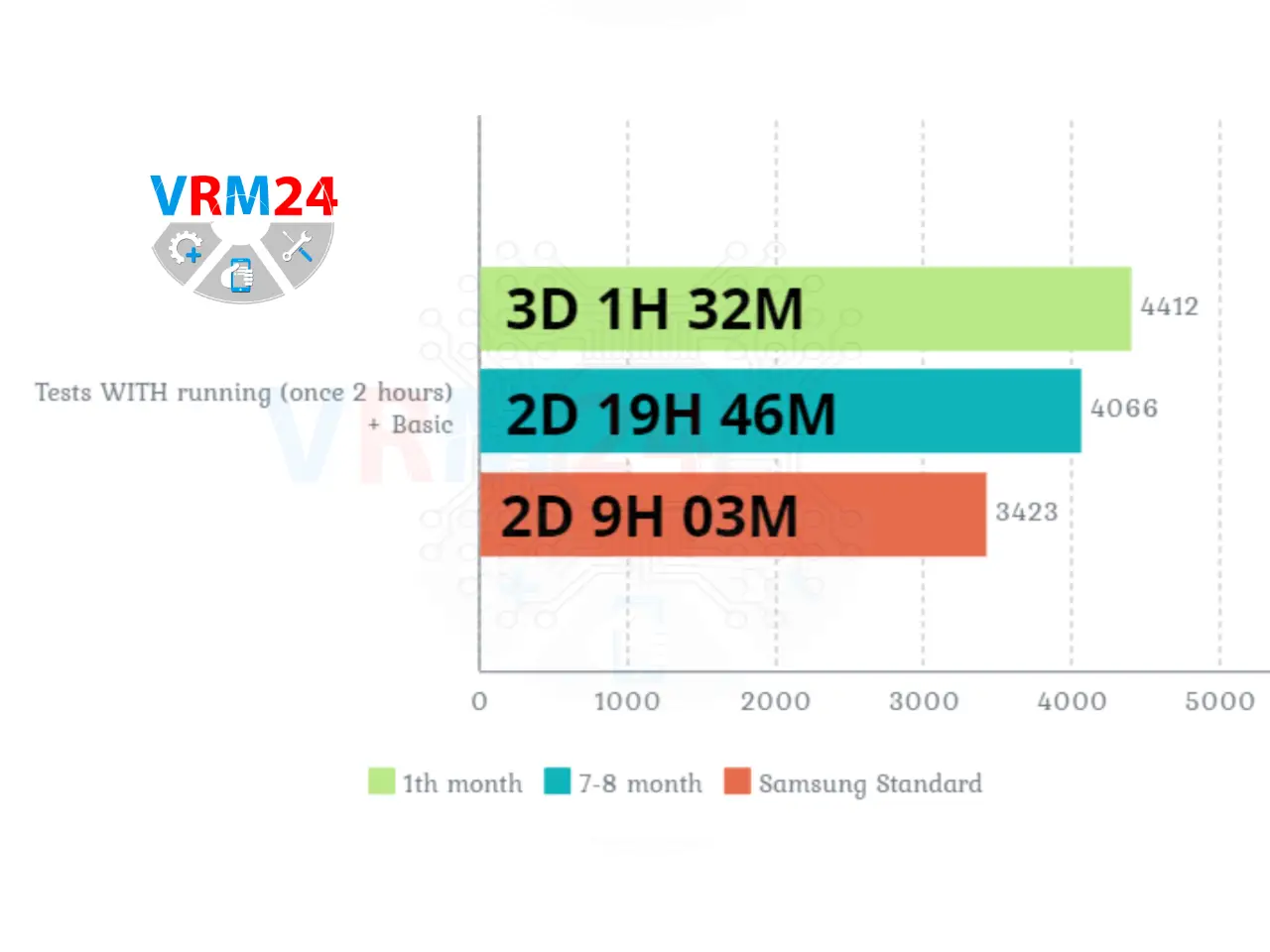
And now we're going to expand the scope of our analysis a little bit. Our graph shows the results of using the watch with Basic, All Turned On, and Basic with 2 hours run. The MapMyRun app with GPS and Bluetooth settings is installed on the watch and certainly Samsung Health is somewhere secretly running as well. It's interesting to note that after 7 to 8 months, with all features enabled, the battery holds a much worse charge than after use in normal conditions plus running. I have tested this again and the result is still the same and within the margin of error, a couple of hours. However, looking at the first month's readings, the all Turned on bar looks disproportionately high, it would be extremely informative to test the watch after another six months to definitely draw conclusions.
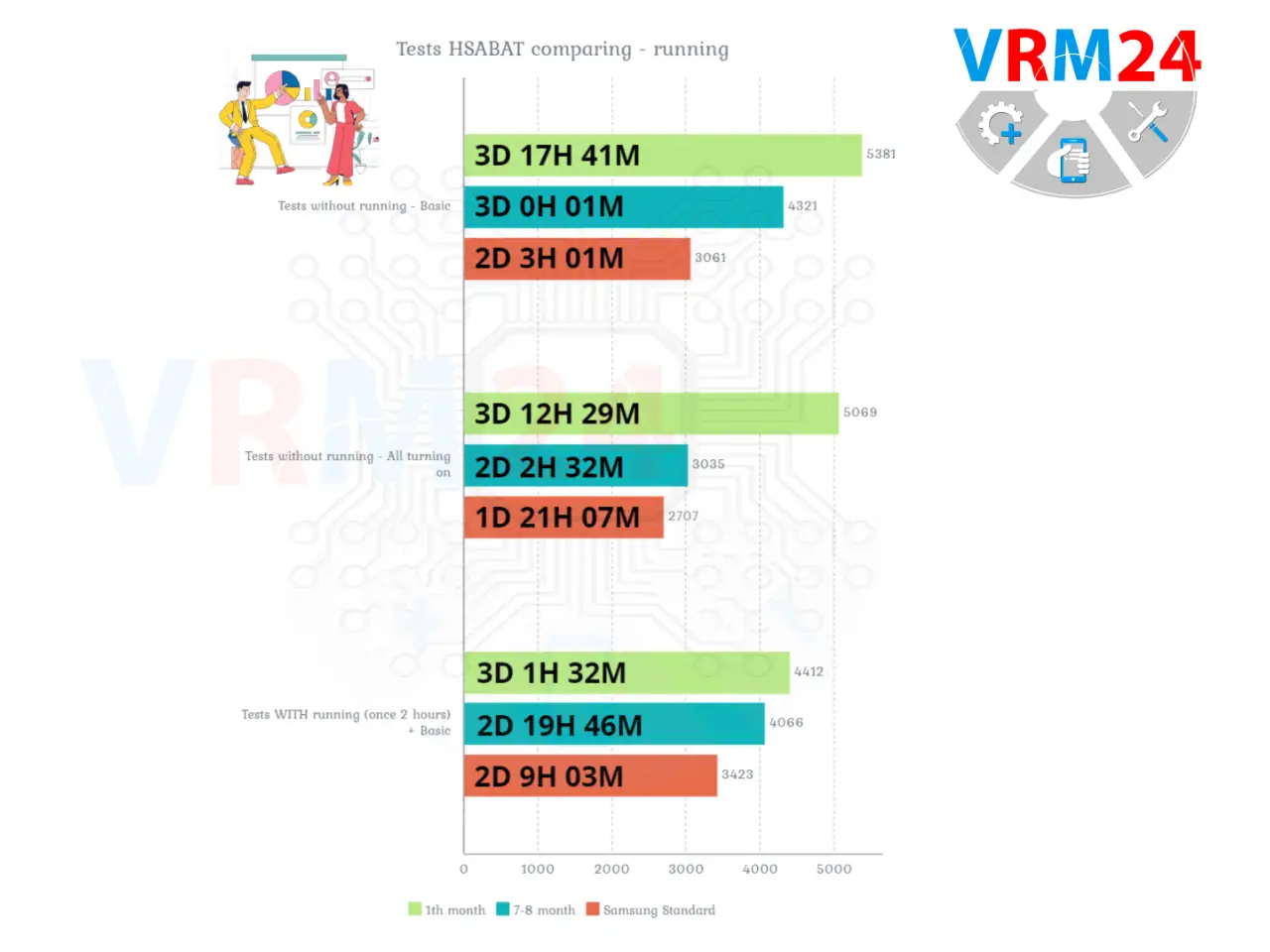
Regarding the running tests, the distance is not as important to us as the time at which the battery was running in running mode. And when I decided to test only running for 2 hours and 28 minutes - we in the team were again a bit surprised by the results. The distance is the same, the time is the same and the result is actually the same after seven to eight months of use. The battery is discharged by 30% as not surprisingly.
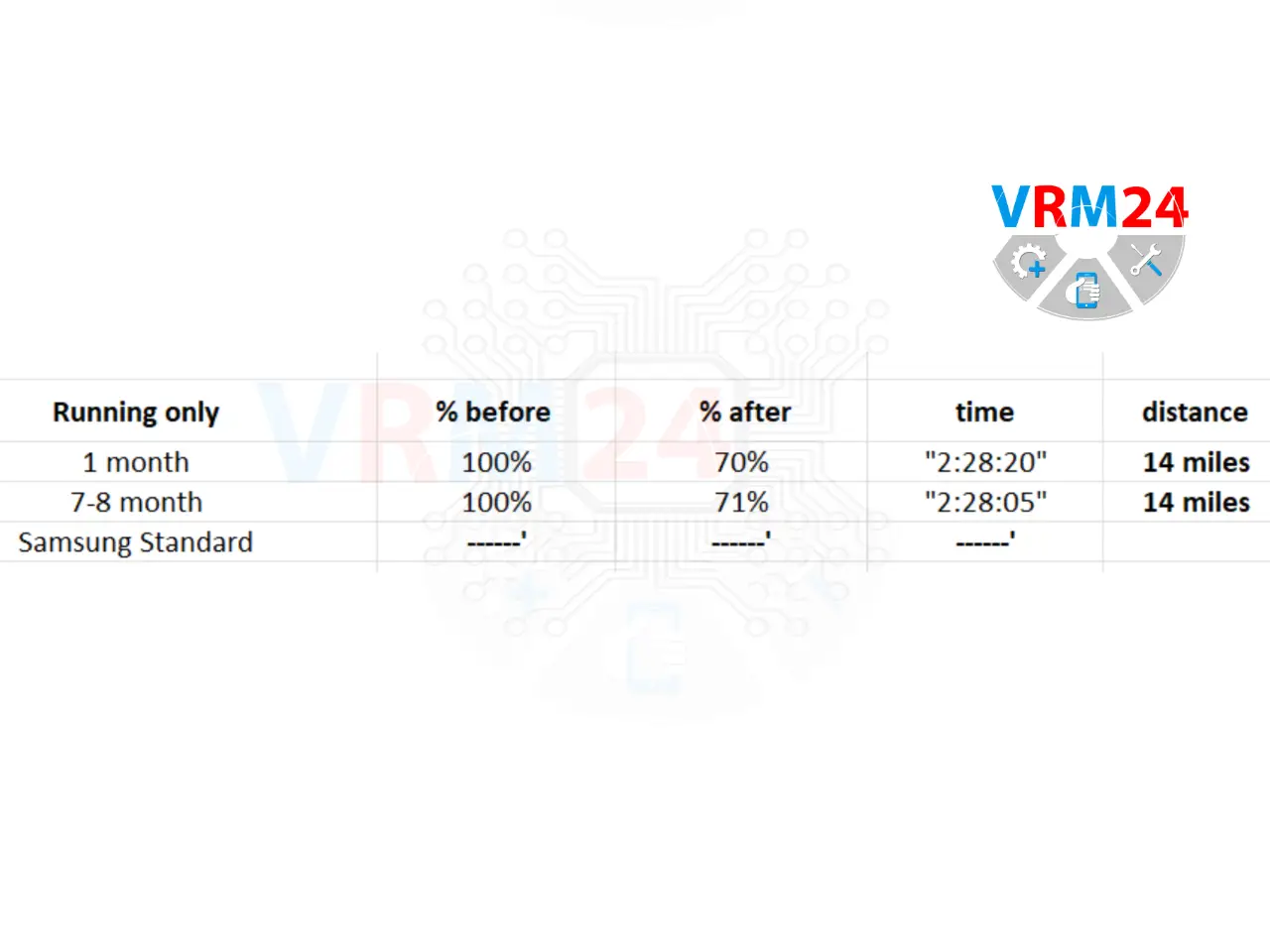
And I thought, who would want to use this watch and run for 2 hours or 2 hours and 30 minutes at one time, so I decided to test this watch as if someone was running each day for 40 minutes. And here as you can see, I got an actually interesting result. When using the watch, I ran every day for 40 minutes and my battery drained much faster than when I ran once for 2 hours and used the watch casually the rest of the time.
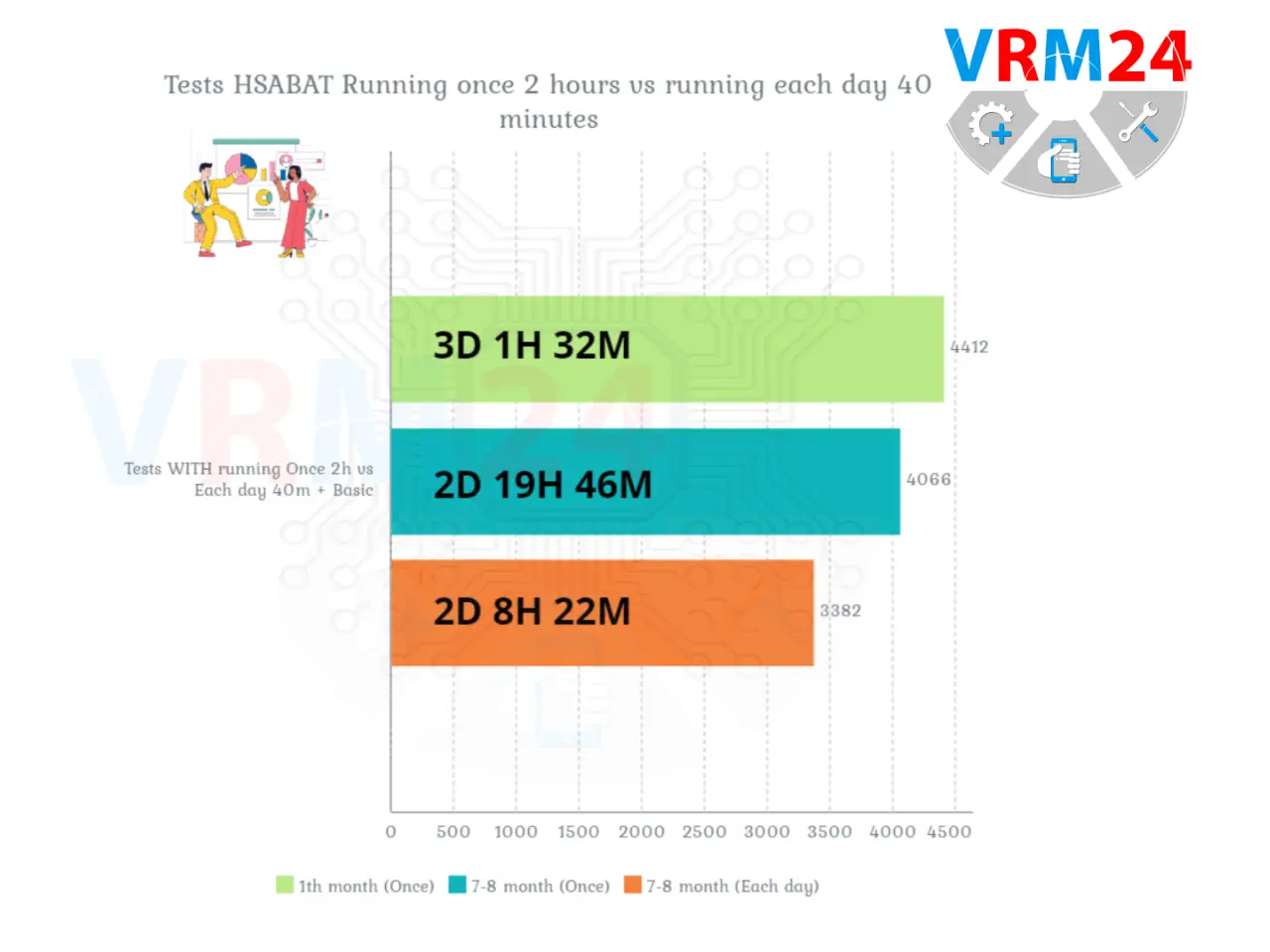
Opinion
What I want to say at the end of this, the HSABAT battery still holds a charge well and does not perform badly. At the same time, battery degradation is evident, and it is significant at around 60-80 charge cycles of 20%. Most likely after the next six months of use, the battery will have lost 50-60% of its primary capacity.
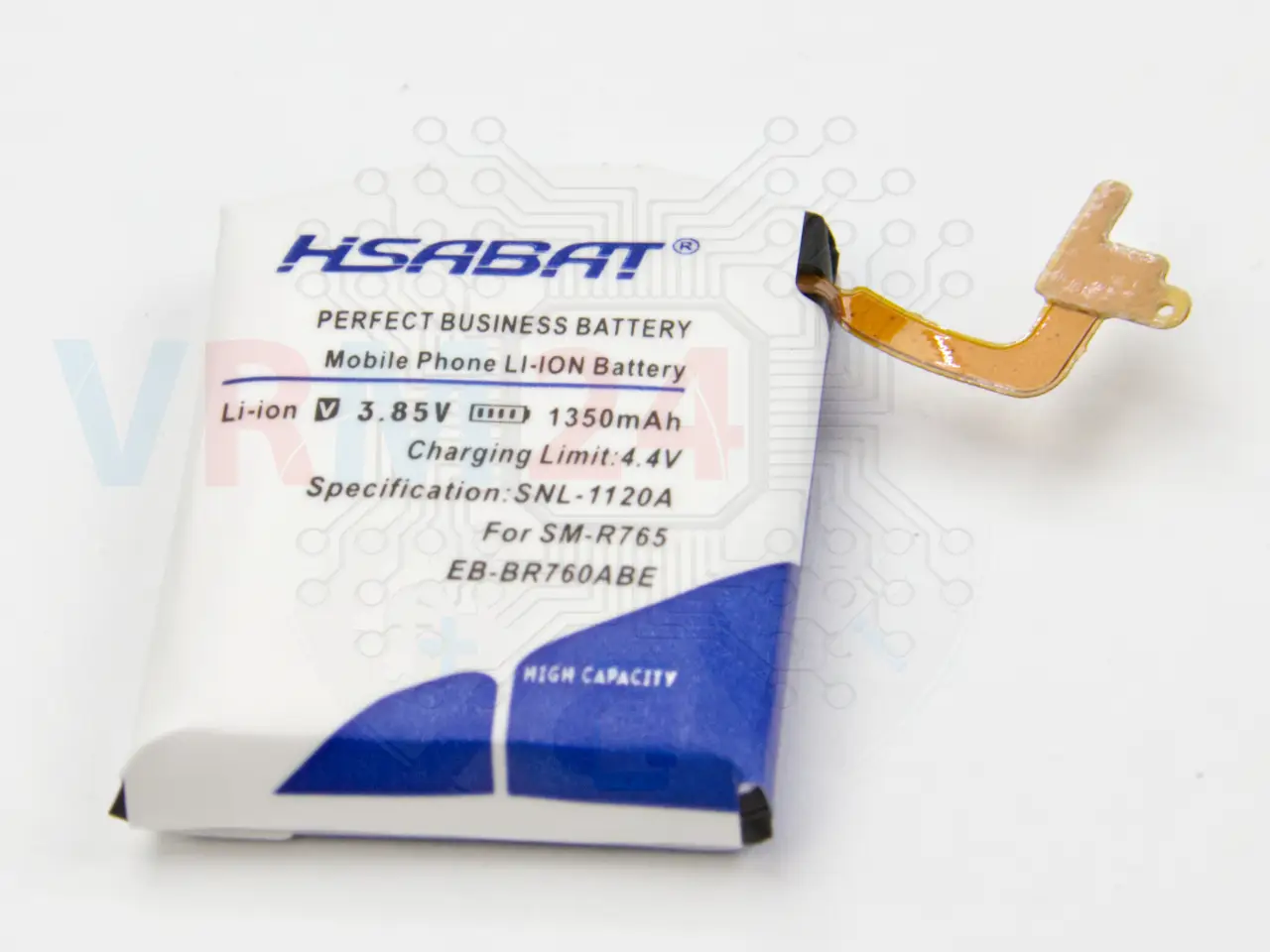
But how bad that is, and what alternatives we have is the real big question. I think that HSABAT battery is not perfect and my prediction of its service life, taking into account my usage patterns, is around one and a half years.
If you have a question, ask us, and we will try to answer in as much detail as possible. If this article was helpful for you, please rate it.
